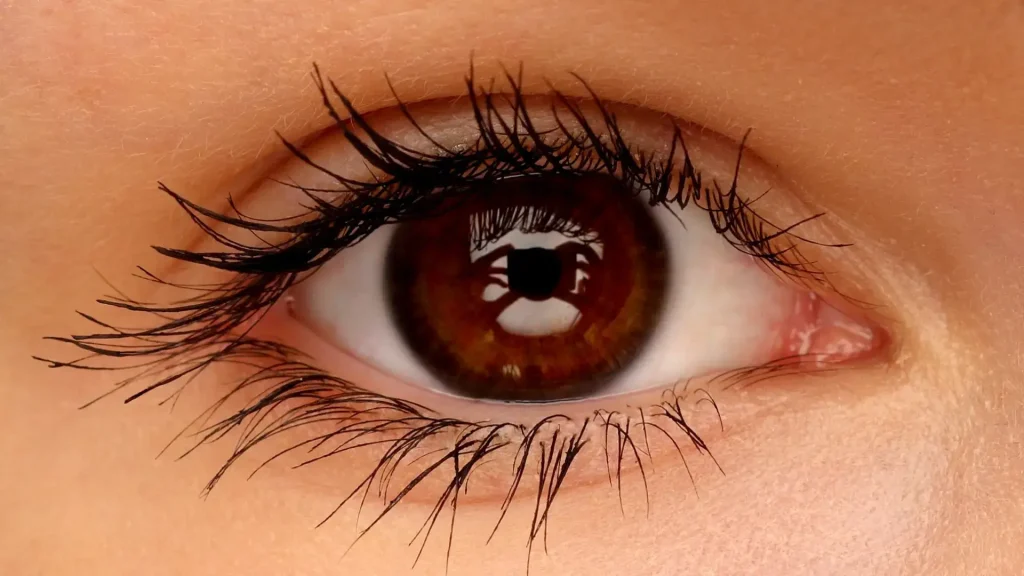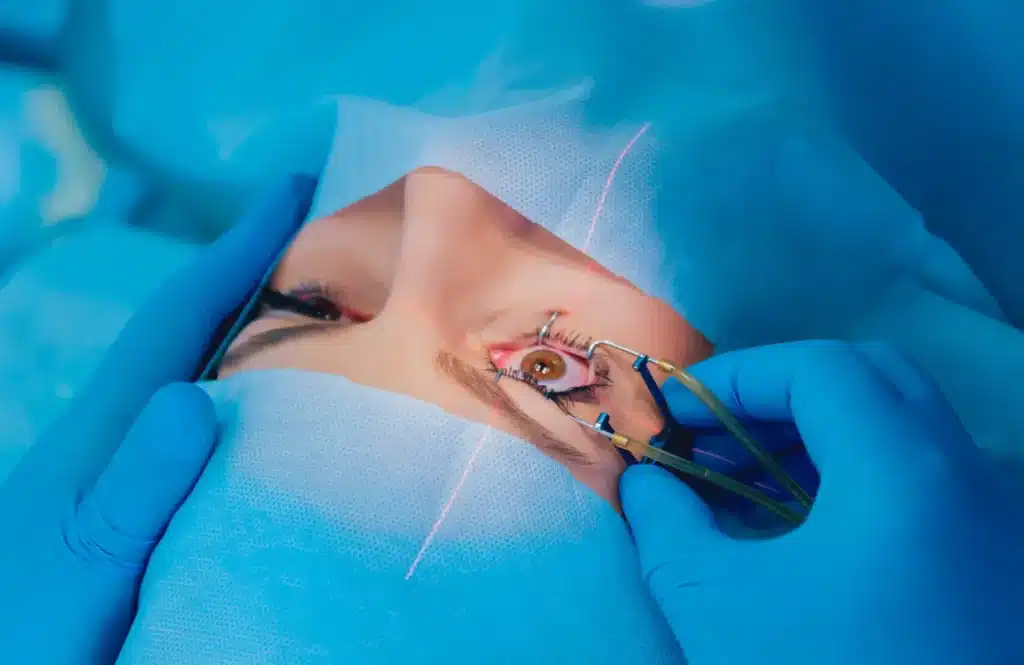Did you know that worldwide, 3 to 5% of the population aged 40 and above are affected by glaucoma? This statistical insight underscores the widespread nature of this eye condition, which is projected to escalate to 112 million affected individuals by 2040.
Individuals coping with glaucoma frequently seek solutions to address their visual condition. Latisse and Lumigan often emerge as potential treatments in their quest for effective medication. By capitalizing on bimatoprost, Latisse and Lumigan can deliver optimal results for glaucoma patients.
This article will explore the active ingredient, bimatoprost, the comparison of Latisse and Lumigan, and their potential benefits and risks for glaucoma treatments.
Key Takeaways
- By enhancing outflow, bimatoprost effectively lowers IOP in individuals with normal eyes, as well as those dealing with ocular hypertension or glaucoma.
- Lumigan and Latisse’s treatments underscore the versatility of bimatoprost (0.01% and 0.03%) as both a treatment for glaucoma and an effective solution for eyelash enhancement.
- Lumigan is an eye drop with a 0.01% bimatoprost concentration, while Latisse requires application to the upper eyelid margin with a 0.03% bimatoprost concentration.
- Despite not indicating glaucoma, patients may expect Latisse treatment to cause potential risks and side effects during their eyelash treatment.
About: Medical Spa RX provides medical practices with premium products at the best prices. If you’re looking to order Latisse online for your practice, the sales representatives at Medical Spa RX can give you guidance.
The Pharmacological Action of Bimatoprost in Lowering Intraocular Pressure (IOP)

Bimatoprost is a medication that treats high pressure inside the eye due to glaucoma or other eye problems. It’s under prostaglandin analogs, increasing and stimulating natural eye fluid flow. Instead of affecting fluid production, it primarily improves the outflow pathways.
This medication works by increasing the outflow of aqueous fluid from the eye, effectively reducing intraocular pressure for glaucoma patients. This eye fluid helps to maintain pressure within the eye but can lead to high intraocular pressure (IOP) when not appropriately drained.
By enhancing outflow, bimatoprost effectively lowers IOP in individuals with normal eyes, as well as those dealing with ocular hypertension or glaucoma. This mechanism supports its use in treatments like Lumigan or Latisse for glaucoma patients, improving their condition while offering additional benefits such as eyelash enhancement.
Understanding the mechanism of action sets the stage for appreciating how bimatoprost effectively reduces intraocular pressure (IOP). Such improvement in fluid dynamics significantly lowers IOP, a critical factor in managing glaucoma conditions.
Lumigan vs. Latisse

Lumigan and Latisse both contain the active ingredient bimatoprost, but they serve different purposes in medical and cosmetic treatments. Medical professionals use Lumigan to treat glaucoma by lowering intraocular pressure. Meanwhile, aesthetic professionals utilize Latisse for eyelash growth.
Bimatoprost ophthalmic solution 0.01%, known as Lumigan, is specifically used to reduce high eye pressure in people with open-angle glaucoma or ocular hypertension. Its introduction marked a significant advancement in treatment options for patients with these eye conditions. It can drain extra fluid out of the eye through two pathways.
On the other hand, Latisse bimatoprost ophthalmic solution 0.03% emerged as an eyelash enhancement treatment. While it has no specific indication, Latisse and glaucoma may often be connected as an option for treating eye problems.
Latisse offers patients a new approach to achieving increased eyelash length, thickness, and darkness. This prescription medicine stands out by providing results that include more pronounced lash extensions and fuller brows, catering to those seeking enhancements without resorting to artificial alternatives.
These two treatments underscore the versatility of bimatoprost (0.01% and 0.03%) as both a treatment for glaucoma and an effective solution for eyelash enhancement. With its approval, patients can access these products that promise and deliver visible improvements in their lashes’ aesthetics and eye concerns.
Moreover, medical professionals must understand the critical distinctions between Lumigan and Latisse, which contain the active ingredient bimatoprost. These differences influence their primary uses and affect their suitability for patients, particularly in treating glaucoma.
| Aspect | Lumigan | Latisse |
| Primary Use | Glaucoma Treatment | Eyelash Enhancement |
| Active Ingredient | Bimatoprost | Bimatoprost |
| Concentration | 0.01% | 0.03% |
| Formulation | Ophthalmic Solution | Topical Solution |
Clinical Studies and Patient Outcomes
Unfortunately, clinical studies and research about Latisse and glaucoma are not readily available, highlighting the lack of clinical evidence to prove the prescription medicine’s safety and efficacy in treating glaucoma. It’s worth noting that Latisse offers a topical cream formulation, making it not ideal for treating inside the eye.
Latisse has only an FDA-approved indication treatment to grow eyelashes for people with inadequate or insufficient lashes. While Lumigan can offer unexpected lash hair growth, Latisse cannot safely provide glaucoma treatment for individuals. Lumigan is an eye drop with a 0.01% bimatoprost concentration, while Latisse requires application to the upper eyelid margin with a 0.03% bimatoprost concentration.
Moreover, patient outcomes and testimonials for Latisse for glaucoma treatment are unavailable. Medical professionals should also understand the product’s hypersensitivity as its contraindication and explain how Latisse and pregnancy do not go hand-in-hand as a precaution and to ensure patient safety.
Potential Benefits, Risks, and Side Effects of Latisse for Glaucoma Patients

Given the lack of research and evidence for its safety and efficacy, Latisse and glaucoma treatment may have no potential benefits. However, Latisse for eyelash growth can bring various benefits to patients.
- Darker, Fuller, Longer Eyalash
- Healthier Lashes
- Longer-Lasting Enhanced Lashes
Medical professionals must remain informed about such developments to offer their patients the best care options. Despite not indicating glaucoma, patients may expect Latisse treatment to cause potential risks and side effects during their eyelash treatment.
- Itching Sensation in the Eyes
- Eye Redness
- Skin Darkening
- Eye Irritation
- Dryness of the Eyes
- Redness of the eyelids
Moreover, understanding these risks is vital for medical professionals and patients to make informed decisions about incorporating bimatoprost or Latisse into a patient’s treatment plan. Potential side effects for glaucoma treatment may include the following symptoms:
- Conjunctival Hyperemia
- Eyelash Growth and Darkening
- Eye Pruritus or Itching
- Erythema of the Eyelid
- Prostaglandin-associated periorbital syndrome (PAPS)
- Increased Iris Pigmentation
These points emphasize why thorough patient evaluation and education are essential when considering Latisse is just for enhancing eyelash aesthetics.
Conclusion
Glaucoma, a chronic eye condition characterized by elevated intraocular pressure (IOP), requires effective management to prevent vision loss. Fortunately, the active ingredient, bimatoprost, in both Lumigan and Latisse, is crucial in reducing IOP. However, it’s worth noting that Lumigan indicates glaucoma treatment, while Latisse offers eyelash enhancement.
Unlike Lumigan, Latisse has no clinical evidence showing the safety and efficacy of the topical cream prescription medicine for glaucoma. Without conclusive evidence, using Latisse off-label for glaucoma poses risks, including potential adverse effects. Consultation with a medical professional is crucial before any glaucoma or aesthetic treatment.
FAQs
1. What is the difference between Lumigan and Latisse regarding their primary use?
Lumigan is primarily used to treat glaucoma, specifically to lower intraocular pressure, while Latisse is used for eyelash enhancement.
2. How does bimatoprost lower intraocular pressure and promote eyelash enhancement?
Bimatoprost increases the outflow of aqueous fluid from the eye, effectively reducing intraocular pressure for glaucoma patients. Additionally, it promotes longer, fuller, and darker lashes when used in Latisse for eyelash enhancement.
3. Is there sufficient clinical evidence to prove the safety and efficacy of Latisse in treating glaucoma?
Unfortunately, clinical studies and research about Latisse and glaucoma are not readily available, highlighting the lack of evidence to support its use in treating glaucoma.
References
- 1. Lin, Y., Jiang, B., Cai, Y., Luo, W., Zhu, X., Lin, Q., Tang, M., Li, X., & Xie, L. (2023). The Global Burden of Glaucoma: Findings from the Global Burden of Disease 2019 Study and Predictions by Bayesian Age-Period-Cohort Analysis. Journal of clinical medicine, 12(5), 1828. https://doi.org/10.3390/jcm12051828
- LUMIGAN® (bimatoprost ophthalmic solution) 0.01% | Why LUMIGAN® 0.01%? (n.d.). Www.lumigan.com. Retrieved June 21, 2024, from https://www.lumigan.com/patient/why-lumigan



















